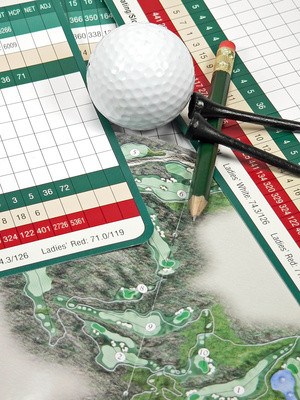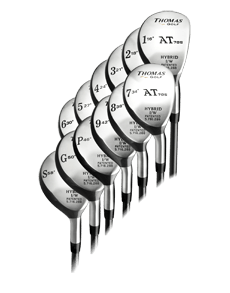
Keeping score in golf is an essential part of the game and helps you track your progress and compare your performance over time. Here's a step-by-step guide on how to keep score in golf:
- Understand the scoring system: Golf is typically played using stroke play, where the objective is to complete each hole in the fewest number of strokes. The player with the lowest total score at the end of the round is the winner.
- Use a scorecard: Obtain a scorecard from the golf course or use a mobile app that provides a digital scorecard. The scorecard has spaces to record your score for each hole.
- Know par for each hole: Par is the number of strokes that an expert golfer is expected to complete a hole. It serves as a reference point for scoring. Par can vary from hole to hole and is typically listed on the scorecard.
- Mark your score: On the scorecard, locate the hole number for the hole you just completed. Write down the number of strokes you took to complete the hole. For example, if you completed a par-4 hole in 5 strokes, you would mark “5” next to that hole.
- Add up your scores: After completing each hole, add up your scores for the front nine holes and the back nine holes separately, as well as the total score for the entire round.
- Record additional information: Some scorecards may have additional spaces to record other statistics, such as fairways hit, number of putts, or penalties incurred. You can choose to track these statistics if you wish.
- Calculate your net score (optional): If you're playing in a handicap competition or tracking your handicap, you may need to calculate your net score. This involves adjusting your gross score based on your handicap to determine your net score. Consult the handicap system guidelines for your specific golf association to understand how to calculate your net score accurately.
- Sign and attest the scorecard: Once you have completed your round and calculated your total score, sign the scorecard to certify its accuracy. If you're playing in a tournament or a formal competition, your playing partner or marker will also need to attest to your scores by signing the scorecard.
- Submit the scorecard (if required): In some situations, you may be required to submit your scorecard to the golf course or tournament organizers for verification or handicap purposes. Follow the specific instructions provided by the golf course or tournament officials.
Remember that keeping an accurate score is an essential aspect of golf etiquette. It's important to record your scores honestly and ensure the integrity of the game.
Keeping score in golf is fairly simple. After each hole, you record how many shots it took you to complete the hole. At the end of your round, add the scores from each individual hole and you'll get your gross score for the 18 holes.
Each hole has an assigned number of shots, called par, that a proficient golfer is expected to finish in. Holes can be a par 3, par 4 or par 5. For a par 3, the golfer is expected to complete the hole in three shots (par), theoretically by landing on the green from the tee and finishing in two putts. For a par 4, two shots are expected to reach the green and again, two putts to finish. Par 5s are the longest of holes, where a golfer is allotted three shots to reach the green and two putts to finish.
Golf also has names for scores below and above par on a single hole. For example, if you take five shots on a par 4, that’s one over par or a
“bogey.” Six shots is a
“double bogey.” A score of one stroke better than par (i.e. a 2 on a par 3) is a “birdie.” Beat par by two strokes and you’ve made an “eagle.” Obviously, the goal is to make pars, birdies and eagles while avoiding bogeys, double bogeys and worse.
For handicapping purposes, the USGA has in place a system referred to as Equitable Stroke Control which helps to minimize the effects of disaster holes. These should be adjusted after the round and your maximum score for each hole is based on your handicap.
Tips for Keeping Score:
1. Pay attention to how many shots you hit while playing a hole, so you won’t have to count them up after finishing.
2. Always write down your score as soon as you complete the hole to avoid forgetting.
3. Cell phone apps and other tools are available that help you keep score.
Update:
Keeping score in golf is an essential aspect of the game, and it helps you track your progress, set goals, and compete with others effectively. Here's how to keep score in golf:
1. Understand the Basics:
- Golf is typically played over 9 or 18 holes, with each hole having a designated par score, which represents the number of strokes an expert golfer should take to complete that hole.
2. Use a Scorecard:
- Golf courses provide scorecards, which are small booklets that include a list of the holes on the course, the par for each hole, and a space to record your scores.
3. Determine Your Handicap:
- If you have an official golf handicap, you may adjust your scores based on the difficulty of the course. This can be done later when submitting scores for handicapping purposes.
4. Record Strokes:
- After each shot, record the number of strokes you took to complete the hole. Start with the first hole and continue for each subsequent hole.
5. Calculate Your Score:
- To calculate your score for each hole, simply add up the number of strokes you took. For example, if you completed a hole in 4 strokes and the par for that hole is 3, your score for that hole is 4.
6. Understand Par:
- The objective in golf is to complete each hole in as few strokes as possible. If your score for a hole is the same as the par score, you've achieved “par” for that hole. If you take fewer strokes than par, you've scored under par, and if you take more strokes, you've scored over par.
7. Calculate Your Total Score:
- After you've completed all the holes on the course, add up your scores for each hole to calculate your total score for the round. This represents the number of strokes it took you to complete the entire course.
8. Review Your Scorecard:
- Review your scorecard to ensure accuracy. Make sure you haven't omitted any holes or recorded incorrect scores.
9. Sign and Verify Your Scorecard:
- If you're playing in a formal competition or tournament, you may need to sign and verify your scorecard with your playing partners. This is to confirm that the scores are accurate.
10. Submit Your Score: – In official competitions or for handicap purposes, you may need to submit your scorecard to the appropriate authority or handicap system.
11. Track Your Stats: – To improve your game, consider tracking additional statistics such as fairways hit, greens in regulation, and putts per hole. This can help you identify areas for improvement.
Remember that golf is both a personal challenge and a social game. Keeping score accurately is essential, but it's also important to focus on enjoying your time on the course, improving your skills, and embracing the camaraderie of the game.
Q&A on how to keep score in golf:
Q1: What is the purpose of keeping score in golf? A1: Keeping score in golf serves several purposes, including tracking your performance, setting goals, determining your handicap, and competing with others. It helps you measure your progress and identify areas for improvement.
Q2: What information is typically included on a golf scorecard? A2: A golf scorecard typically includes the names of the golfers, the list of holes on the course, the par for each hole, spaces to record scores for each hole, and often additional columns for handicaps or notes.
Q3: How do I calculate my score for a hole in golf? A3: To calculate your score for a hole, simply add up the number of strokes it took you to complete that hole. For example, if you completed a hole in 4 strokes and the par for that hole is 3, your score for that hole is 4.
Q4: What does it mean to be “under par” or “over par” in golf? A4: Being “under par” means you've completed a hole or the entire round in fewer strokes than the designated par score. Being “over par” means you've taken more strokes than the par score for a hole or the entire round.
Q5: How do I calculate my total score for a round of golf? A5: To calculate your total score for a round, add up your scores for each hole on the course. This represents the total number of strokes it took you to complete the entire round.
Q6: What is a golf handicap, and how does it relate to keeping score? A6: A golf handicap is a numerical measure of a golfer's playing ability. It's used to level the playing field in competition by allowing golfers of different skill levels to compete fairly. To establish a handicap, you need to keep a record of your scores over time, adjusting for the difficulty of the courses you play.
Q7: Can I keep score electronically using a golf app or GPS device? A7: Yes, many golfers use smartphone apps or GPS devices to keep score electronically. These tools can provide additional features such as GPS yardages, statistics tracking, and the ability to share scores with friends or enter them into a handicap system.
Q8: What should I do if I make a mistake on my scorecard during a round? A8: If you make a mistake on your scorecard, it's essential to correct it before submitting your score. Typically, you should cross out the incorrect score, record the correct score, and have your playing partners verify the correction. It's important to ensure the accuracy of your scorecard.
Q9: Can I keep an unofficial score for casual rounds of golf? A9: Absolutely! You can keep an unofficial score for casual rounds of golf to track your progress and enjoy the game. Keeping score can be a valuable practice even when not playing in a formal competition.
Q10: Are there specific rules or etiquette for keeping score in golf? A10: While there are no strict rules for keeping score, it's important to do so accurately and honestly. It's also customary to keep pace with the group ahead of you and not spend excessive time recording scores during the round to maintain a good pace of play.
Keeping score in golf is an integral part of the game, whether you're playing for fun or in a competitive setting. It helps you measure your performance, set goals, and track your improvement over time.





